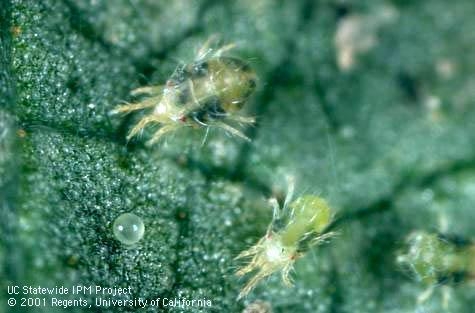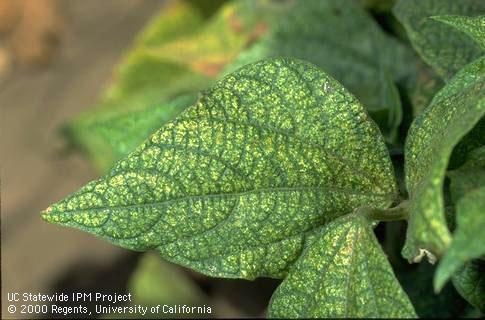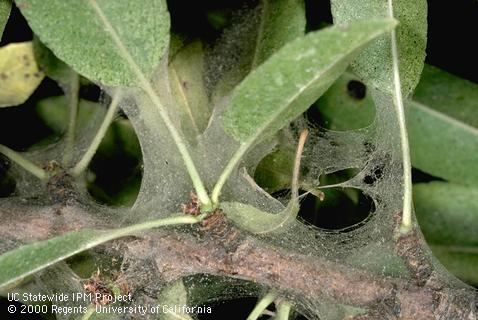
Spider mites damage plants by sucking cell contents from leaves. If you see plant leaves with light dots on them (stippling) that turn yellowish or reddish and drop off, and/or large amounts of fine webbing on leaves, twigs, and fruit, your plants might have spider mites.
Spider mites look like tiny, moving dots that will move around rapidly when disturbed. To correctly identify these pests, use a 10x hands lens to view them up close. If you don't have one, you can tap the plant with a stick onto a white sheet of paper.

Management
Small numbers of spider mites shouldn't be a concern. However, very high populations of spider mites can be a problem for certain plants. Reduce conditions favorable to spider mites by providing adequate water for your plants and reducing dust on and around the leaves. Certain insecticidal/miticidal oils or soaps may also help. Be sure to read the label and apply any pesticides with care. Find more information on how to manage spider mites in the UC IPM Pest Notes: Spider Mites.
The good news: in late summer, high mite populations may rapidly decline when predators overtake them, and as the weather turns cooler and the rains begin.
Attached Images:
